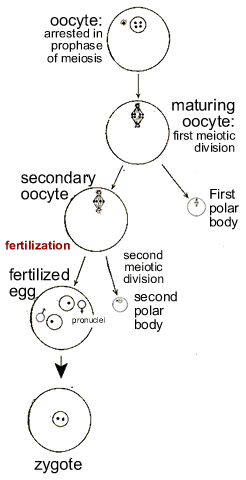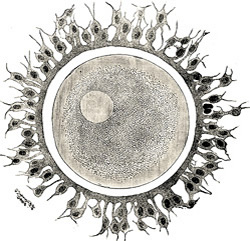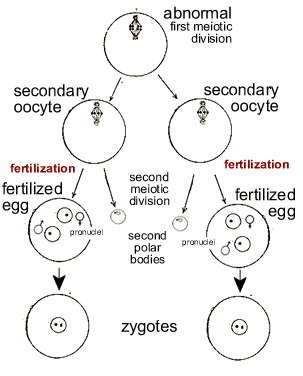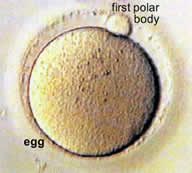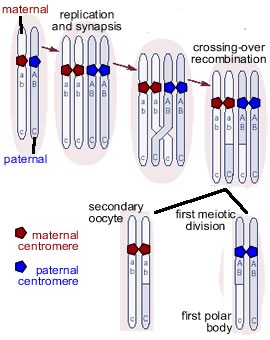The type of behavior you describe can occur after a fashion.
During the normal human reproductive cycle a dormant oocyte is stimulated to mature, that is to reenter active meiosis.
(I am assuming that you know most of these terms, but you learn more using the biofundamentals site or the wikipedia!)
The dormant oocyte is arrested in prophase of meiosis I, that is when homologous chromosomes align and crossing-over (genetic recombination) occurs.
Once activated, the oocyte passes through the first meiotic division, which produces two cells; the secondary oocyte and a much smaller cell, the first polar body.
In most cases, the first polar body dies.
The secondary oocyte arrests until it is fertilized by a sperm.
